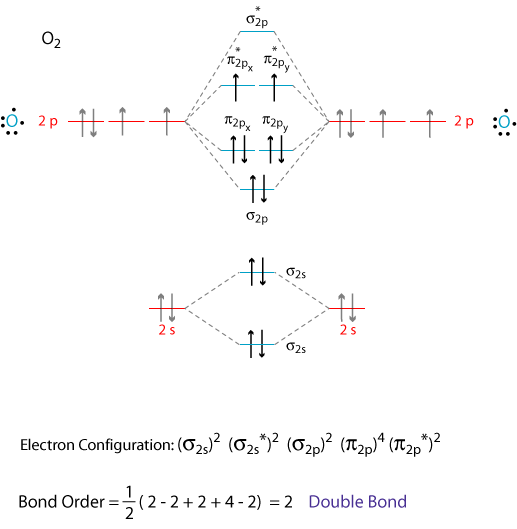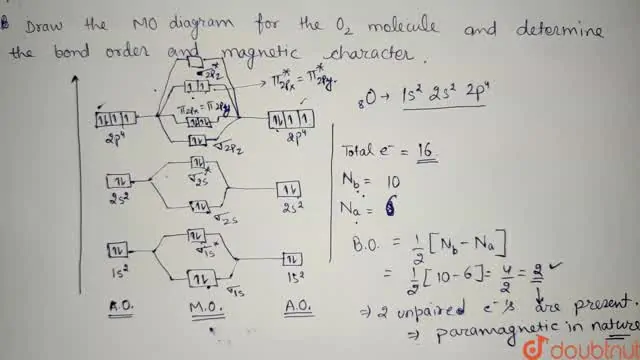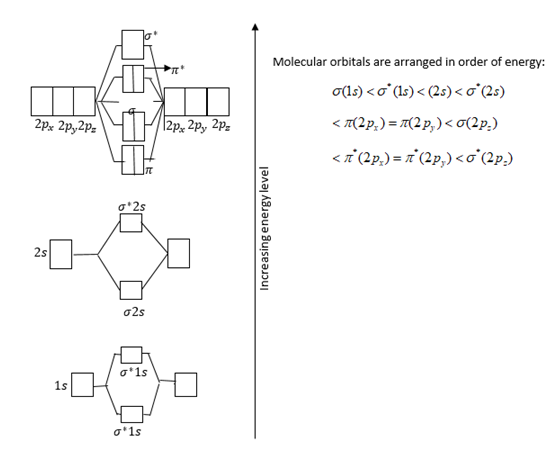
SOLVED: Compare the relative stability of the following species and indicate their magnetic properties (that is, diamagnetic or paramagnetic): O2, O2^+, O2^- (superoxide ion), O2^2- (peroxide ion).

Write the molecular orbital electronic configuration of N2 and O2 molecules with the of molecular orbital theory. Predict its magnetic behaviour also.
Why is oxygen paramagnetic in nature and sulphur diamagnetic even though both belong to the same group? - Quora

22-Draw a molecular orbital diagram of ${N 2}$ or ${O 2}$ with magnetic behavior and bond order - Studocu

Schematic of the 'O2' molecular orbital diagram. The figure explains... | Download Scientific Diagram

How B2,O2, NO, NO2,ClO2 paramagnetic If I take B2 then it has 10 electrons so should be dimag - Chemistry - Chemical Bonding and Molecular Structure - 10867657 | Meritnation.com















